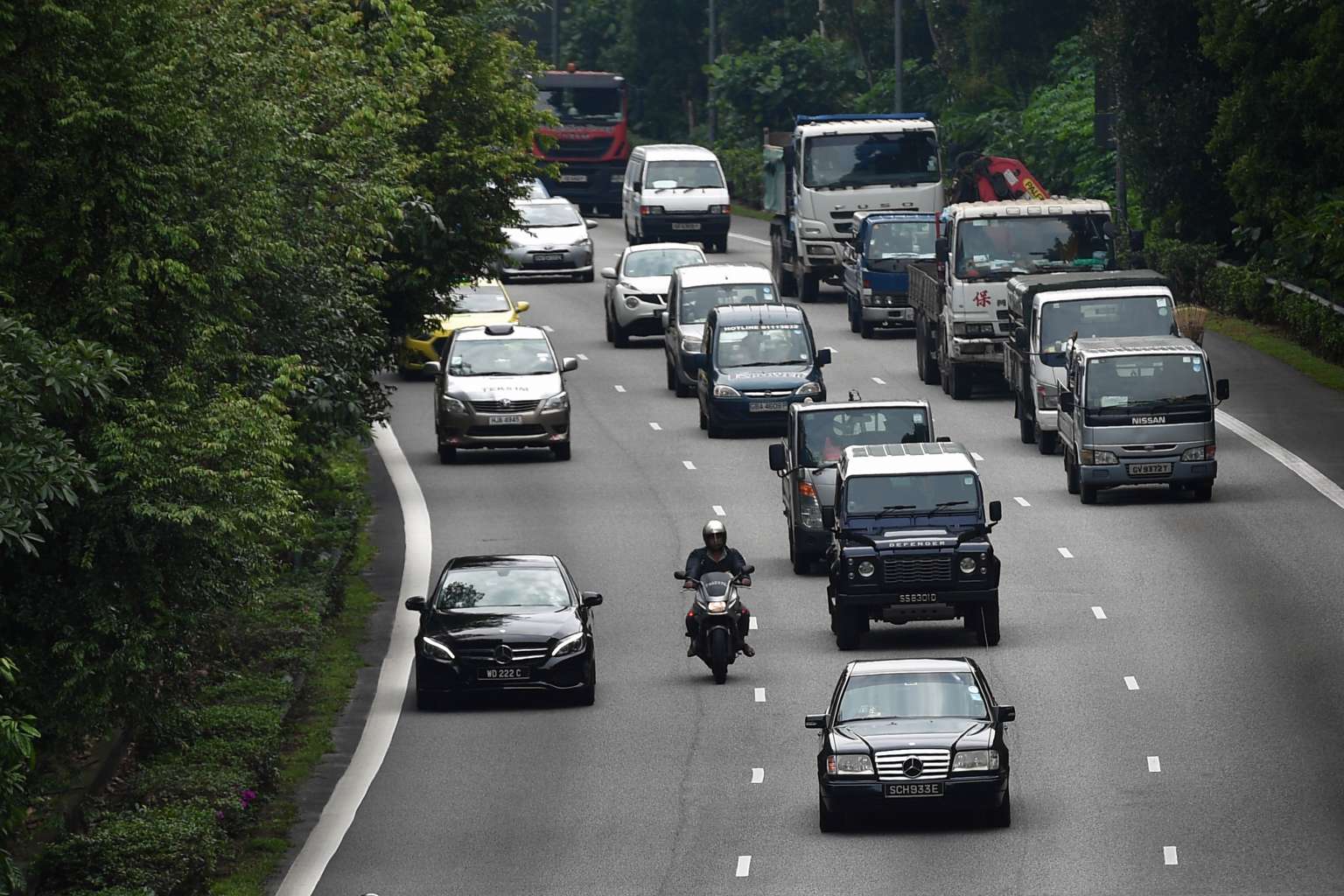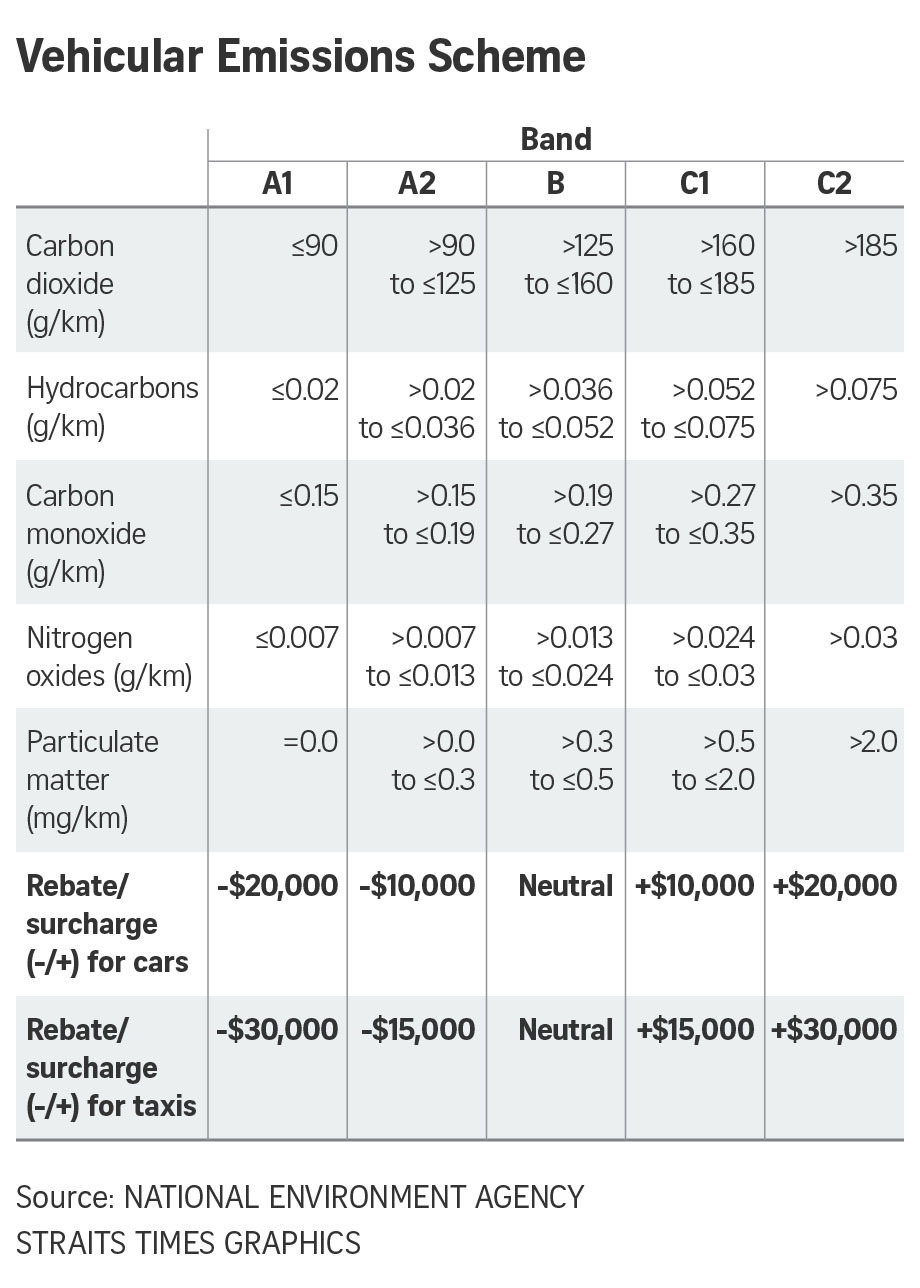Parliament: Far fewer cars will qualify for rebates in new emissions scheme
Sign up now: Get ST's newsletters delivered to your inbox

More car buyers and taxi operators will be liable for tax surcharges when the new Vehicular Emissions Scheme (VES) kicks in from Jan 1.
ST PHOTO: MARK CHEONG
Follow topic:
SINGAPORE - If buying habits remain unchanged, more car buyers and taxi operators will be liable for tax surcharges when a new Vehicular Emissions Scheme (VES) kicks in from Jan 1 next year.
The new scheme, administered by the National Environment Agency and announced by Minister for the Environment and Water Resources Masagos Zulkifli on Wednesday, will be stricter on carbon dioxide emission, and will include four other pollutants, namely hydrocarbons, carbon monoxide, nitrogen oxides and particulate matter.
There will be two rebate bands, two surcharge bands and one neutral band, compared with the current four, four and one, respectively.
Rebates and surcharges are either $10,000 or $20,000 for cars, and $15,000 or $30,000 for taxis, compared with $5,000-$30,000 and $7,500-$45,000 today, respectively.
The new VES will apply to all new cars and cabs, as well as imported used cars. It will apply till Dec 31, 2019. The NEA said it would be reviewed regularly.
Models will be categorised according to each of its worst-performing standard. Diesel models, with their comparatively low CO2 levels which would have qualified them for generous rebates, are likely to be slapped with hefty surcharges because of their relatively high nitrogen oxide and particulate matter emissions.

While diesel models will bear the brunt of changes, petrol models are also treated more stringently. Many popular petrol cars which qualify for $5,000 or $10,000 tax breaks today will fall into the neutral band, where no rebate nor surcharge is applied.
Even the petrol-electric hybrid Toyota Prius 1.8 in its current form, which is granted a $30,000 rebate today, is deemed neutral in the new VES.
As of now, only electric models are likely to qualify for the top rebate of $20,000 and $30,000 for cars and taxis, respectively. This tier stipulates zero emission for particulate matter, and near-zero emission for the other pollutants and less than 90g/km of CO2.
There will however be a grid emission factor to take into account the CO2 produced in the production of electricity used to charge these battery-powered vehicles. The Land Transport Authority said this factor will only be announced "in due time".
Meanwhile, the Early Turnover Scheme (ETS) will offer bigger carrots to entice fleet owners to replace their older light diesel commercial vehicles with those which comply with the latest Euro 6 emission standard.
The enhanced scheme, which will run from Aug 1 this year to July 31, 2019, targets owners of Euro 2 and 3 light commercial vehicles of up to 3,500kg. Those qualifying will be granted a 35 per cent Certificate of Entitlement (COE) bonus of their vehicle's remaining 20-year lifespan, up from 13 per cent now.
This bonus will be applied as a discount to the COE prevailing quota premium, which the owner can use for his replacement vehicle instead of having to bid for a fresh certificate.
This change is likely to spur a higher take-up of the ETS among light commercial vehicle owners. Currently, the bonus is more generous for those owning heavier vehicles.

